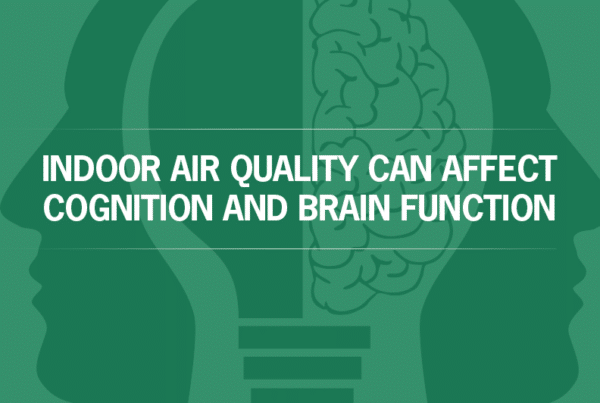12/14/2010 // US // Camfil // Camfil // (press release)
Air Filtration Systems News – We may like the great outdoors, but we spend a whole lot of time indoors — as much as 90 percent of our days, according to the U.S. Environmental Protection Agency. Little wonder, then, that the quality of indoor air has a major impact on the quality of our lives, particularly our health and comfort. This is particularly true in a hospital or other healthcare setting, where patients, staff, and visitors not only want to feel healthy but to stay healthy, avoiding infection from airborne particles that can all-too-easily spread if proper techniques, strategies, and air filtration systems are not used.
The good news is that clean, healthful indoor air is readily achievable. But good Indoor Air Quality, or IAQ, requires careful planning — particularly when hospitals and healthcare facilities design new facilities or upgrade existing ones. For example, products that incorporate sustainable elements into their design can offer significant benefits, both in health and savings. Green air filters and air filtration systems that do a better job of providing clean air yet use fewer resources don’t just eliminate dangerous airborne particles, they reduce energy, maintenance, and disposal costs. Such systems can rapidly pay for themselves, while fostering a greener world and healthier communities.
Hospitals that have embraced Camfil clean air solutions have seen these very real, and measurable, benefits already. The innovative green air filters — designed from the ground up for sustainability — have enabled these hospitals and other healthcare facilities to reduce their HVAC energy use by 15 to 30 percent. Considering that a hospital’s HVAC system is a major contributor to its energy costs, those are significant savings. At the same time, the greater energy efficiency made possible by Camfil air filtration system’s novel design — which uses fine fiber media to enable peak performance throughout the product’s lifecycle — means the filters can be replaced less often. So waste and disposal costs are reduced.
Of course, products designed to maximize efficiency and sustainability are just one step in a well-thought-out plan for optimal air quality. The U.S. Green Building Council (USGBC), in conjunction with the American Society of Heating, Refrigerating and Air-Conditioning Engineers (ASHRAE) and other building industry leaders offers 40 helpful strategies in its Indoor Air Quality Guide, published earlier this year.
Among the group’s tips:
— Begin planning for IAQ at the very beginning of the design process — before the building layout and ventilation system are defined. It’s always easier to ‘design in’ features rather than add them on later. And future retrofits are never inexpensive.
— Control indoor humidity. This is essential, as high humidity can trigger condensation that, in turn, may spur mold. High humidity also contributes to allergies. Yet low humidity can cause problems, too, particularly the drying out of mucous membranes. So it’s important to take the time and effort to determine a healthful balance. Additional consideration should be given to humidity control in special circumstances, including hot and humid climates, and spaces with unusually cold surfaces.
— Limit the entry of outdoor contaminants. Here a top-flight hospital air filter system is vital, as outdoor air pollutants that enter a healthcare facility can have adverse health effects for occupants — many of whom may already be at increased risk for infection and disease. Outdoor contaminants include herbicides and pesticides, radon, contaminants carried by pests, and particles and gases in outdoor air. What makes sustainability-focused products like Camfil green air filters particularly compelling is the way they improve performance even as they take less of a toll on the world around them. Sustainability done right is a win-win situation.
— Select adequate building materials and furnishings. Indoor contaminants should not be overlooked, either. Furnishings, for example, should be selected for minimal emissions of harmful or irritating compounds. There’s a financial payoff to this strategy, too. By using ‘cleaner’ building materials, building managers have less need to dilute air contaminants with costly ventilation methods. Be sure to note, however, that emissions rates for building products and materials vary significantly over time. For some products, chemical emissions decay rapidly. Others, meanwhile, may release contaminants at nearly constant rates for many months. So the ‘emissions lifespan’ of a material must be considered when choosing what to use, and what not to use, within the building.
By following strategies like these, hospitals and other healthcare facilities can see dramatically better air — and a take a big step towards providing a healthful, beneficial environment for all of those who walk inside their doors.
The world leader in air filtration systems and clean air solutions — for health care and other industries — Camfil provides the tools to achieve sustainability, maintain high air quality, and reduce airborne infections; all while lowering total cost of ownership. We’ve helped hospitals, office buildings, hotels, and other facilities go green without ever sacrificing performance. For more information about our green air filtration systems, visit our newsroom at https://hvacairfiilters.submitmypressrelease.com, read about the Clean Air Solutions Company at https://cleanair.camfil.us, or call us at (toll free) 888.599.6620.
Media Information:
Address:
Phone: 888.599.6620
Url: HVAC Air Filters



